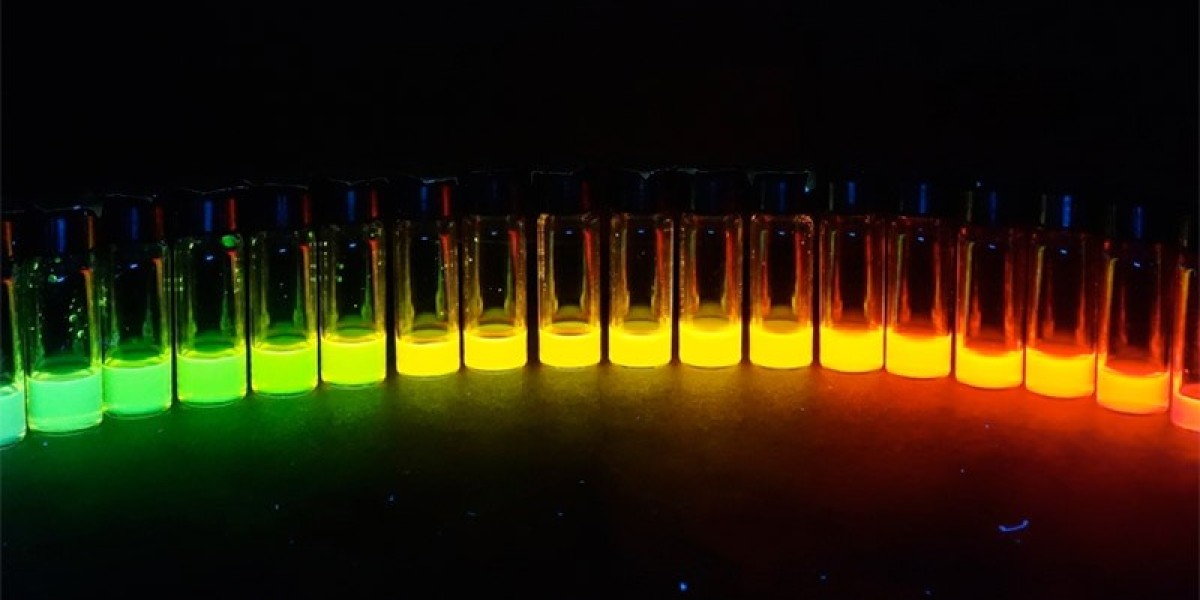Quantum dots have emerged as a pivotal technology driving innovation and growth across various industries. These nanoscale semiconductor particles exhibit unique optical and electronic properties, making them highly sought after for their exceptional brightness, stability, and tunability. This blog explores the fascinating world of quantum dots, shedding light on their underlying principles, recent advancements, and future prospects in shaping the technological landscape.
The Science Behind Quantum Dots: Decoding their Fundamental Properties
At the core of Quantum Dots lies the principles of quantum mechanics, where confinement of electrons within nanometer-sized semiconductor structures leads to quantized energy levels. This confinement effect imparts quantum dots with distinctive optical properties, including size-dependent emission wavelengths and high quantum yields. By precisely controlling the size, composition, and surface chemistry of quantum dots, researchers can tailor their optical characteristics for specific applications, ranging from displays and lighting to biomedical imaging and sensing.
Diverse Applications Across Industries: Harnessing Quantum Dots for Innovation
The versatility of quantum dots has spurred their integration into a wide range of products and technologies. In the electronics industry, quantum dot displays offer vibrant colors, high brightness, and energy efficiency, making them ideal for next-generation televisions, monitors, and smartphones. Similarly, in healthcare, quantum dots serve as sensitive probes for imaging and diagnostics, enabling early detection and personalized treatment of diseases such as cancer and infectious disorders. Moreover, quantum dots hold promise for renewable energy applications, including photovoltaics and solid-state lighting, where their superior optical properties enhance device performance and efficiency.
Recent Advancements Driving Market Growth: Exploring Cutting-Edge Technologies
In recent years, significant advancements in quantum dot research and development have fueled market growth and expanded the scope of potential applications. One notable breakthrough is the development of perovskite quantum dots, which exhibit enhanced photoluminescence and stability compared to traditional semiconductor materials. These perovskite quantum dots hold promise for applications in displays, lighting, and solar cells, offering a cost-effective and scalable solution for next-generation technologies. Additionally, efforts to improve the synthesis, purification, and functionalization of quantum dots have led to enhanced performance and expanded commercialization opportunities across industries.
Challenges and Opportunities: Navigating the Quantum Dot Landscape
Despite their immense potential, quantum dots face several challenges that must be addressed to unlock their full capabilities. One key challenge is the toxicity of certain quantum dot materials, particularly heavy metals such as cadmium, which raises concerns for environmental and human health. To mitigate these risks, researchers are exploring alternative materials and manufacturing processes that minimize or eliminate hazardous components. Additionally, scalability and cost-effectiveness remain important considerations for widespread adoption of quantum dot technologies, prompting ongoing research into efficient production methods and economic viability.
Future Outlook: Illuminating the Path Forward for Quantum Dots
As we look ahead, the future of quantum dots appears brighter than ever, with continued advancements poised to drive innovation and market growth across industries. From enhancing display technologies and biomedical imaging to enabling sustainable energy solutions, quantum dots hold the potential to revolutionize numerous sectors and improve quality of life worldwide. By fostering collaboration between academia, industry, and policymakers, we can overcome existing challenges and harness the full potential of quantum dots to address pressing societal needs and pave the way for a brighter, more sustainable future.


